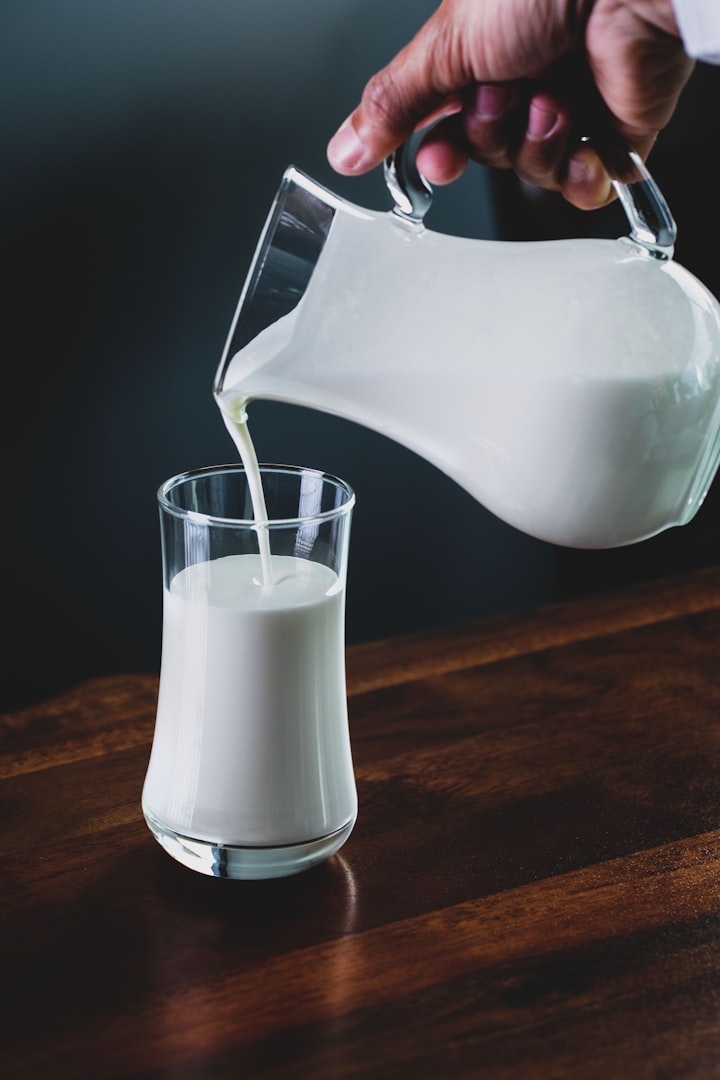Do Children Need Milk?
3 Reasons Not to Give It to Children

Dairy products are a controversial topic. Some nutritionists vehemently criticize milk, others insist that without dairy the diet is not complete. As usual, we need to find the golden mean.
Type A1 proteins.
Let's start by looking at the physiological aspect. All cells in the body are made up of proteins. We get protein from food, after which the enzyme system breaks it down into amino acids - bricks from which the body builds its cells.
But in the contemporary world (poor ecology, stress, excess sugar, etc.) the enzyme system does not always break down proteins into amino acids, and as a result in the blood may remain unbroken fragments, harmful to the body.
The basic protein in milk is beta-casein. It is of two types - A1 and A2, which differ from each other by only one amino acid. A1 contains histidine in position 67, and A2 - proline.
Our enzyme system hardly breaks down beta-casein type A1, and theoretically, its fragments, which float in the blood, could cause several chronic diseases and dysfunctions of the digestive tract.
How do we know what kind of protein is in the milk we buy? There is practically no such possibility, this fact is not indicated on the packaging, and only after a genetic test, it is possible to determine what type of protein the cow gives.
At the same time, different breeds of cows are thought to produce milk with different types of protein. It is also rumored that so far African and Asian cows only produce A2 milk. While European and American breeds most often produce type A1 milk. Why so far? Scientists assume that the difference in an amino acid occurred after the mutation of cows 5–10 thousand years ago, ie theoretically in those days, milk was harmless.
What to do: You eat and feed your child with cheese and lactic acid products, because in the process of producing them, beta-casomorphin BCM 7 is destroyed, a substance that is not assimilated from type A1 protein.
Lactose.
Dairy products also contain lactose (milk sugar). In the intestines, under the influence of the enzyme lactase, milk is processed into lactic acid. It normalizes the function of the intestinal microflora, regulates the accumulation of fat, facilitates the absorption of calcium, magnesium, and phosphorus. But if for some reason lactase does not digest lactose qualitatively, it begins to accumulate in the intestine, causing diarrhea, flatulence, bloating, the multiplication of pathogenic bacteria (especially in children).
If the above symptoms are often present in the child, then a medical check-up is necessary to identify lactose intolerance. By the way, many children overcome it by following a proper diet and maintaining the enzyme system.
What to do: Whole milk consumption should be limited as much as possible, including for healthy children. It is recommended to replace it with vegetable milk or lactic acid products (lactose in them is in a form that is easy to assimilate). Lactic acid products (eg kefir and yogurt) will also saturate the intestinal microflora with bifido and lacto-bacteria, strengthening children's immunity.
The presence of other sources of calcium.
Milk is considered a rich source of calcium. But to assimilate this element, the body needs fat-soluble vitamin D. Therefore, calcium from defatted products will not be assimilated, and calcium from low-fat products will be assimilated in minimal amounts.
Daily calcium for children by age:
- 1–3 years 800 mg
- 3–8 years 800–1,000 mg
- 10–18 years 1,200–1,500 mg
What to do: Calcium cannot be covered by milk, so include other sources of calcium in your diet, such as fish, eggs, and green vegetables. Don't buy low-fat dairy and lactic acid products, they're useless.
Dairy products are completely excluded from the diet of children suffering from autism. Regardless of the primary cause of the disease, autistic people suffer from digestive disorders, and the composition of the intestinal microflora changes. But most importantly, they increase the permeability of the intestinal walls.
Normally, only completely digested food, as well as trace elements, enter the bloodstream through the intestinal wall. It does not penetrate pathogenic microorganisms and products formed as a result of their vital activity. But if the permeability of the intestinal wall is disturbed, then it begins to "drain" undigested food and toxins, which are secreted by the intestinal microflora. Undigested protein molecules (peptides) are especially harmful to the brain.
There is no such thing as good or bad food. It is always important to take into account their amount in the diet and their initial state of health.
Children with the insufficiently developed digestive system or suffering from diseases of the gastrointestinal tract should stop consuming milk. Healthy children can consume it in small quantities, the parent needs to know the answer to the question "Why does the baby need milk".





Comments
There are no comments for this story
Be the first to respond and start the conversation.